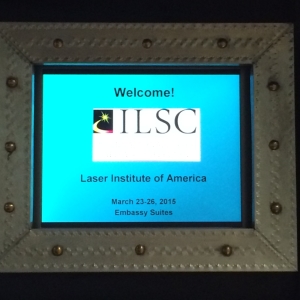By Geoff Giordano
ALBUQUERQUE, N.M. — This morning, the International Laser Safety Conference kicks off with the annual meeting of the ASC Z136, the committee that produces the ANSI Z136 laser safety standards. Later, this evening’s welcome reception will be a relaxed introduction to an intensive, informative week.

It’s been two years since the first ILSC I attended, but the impact of that event has remained quite clear. Unlike the rest of LIA’s events, ILSC isn’t all about the wonderful things today’s lasers can help manufacture. ILSC takes a hard look at the damage done when lasers are handled improperly or used under less-than-perfect conditions.
Yes, ILSC does look ahead to new laser technologies and therapies — for example, the future of semiconductor lasers is the subject of a pair of sessions. But the primary focus is the significant human and monetary cost of laser hazards, and the tireless efforts of the experts gathered here to mitigate those hazards.
Among the experts here are dozens of certified laser safety officers (CLSOs) and medical laser safety officers (CMLSOs) who have gone the extra mile to qualify their credentials through the Board of Laser Safety’s tailored programs. Now more than 10 years old, the CLSO and CMLSO programs have bolstered the credibility of laser safety professionals in a broad range of institutions, from NASA and Boeing to numerous universities, laboratories and health-care facilities.
It’s perhaps not exaggeration to suggest that these certified laser safety professionals have prevented millions of dollars in damages and lawsuits thanks to their commitment to pursue CLSO and CMLSO status. One of the many sessions I’m looking forward to will document the changes in attitude of students following laser safety training, research performed by ILSC General Chair John O’Hagan of Public Health England, his PHE colleague Michael Higlett, and John Tyrer, chair of ILSC’s Laser Safety Scientific Sessions.
The biennial ILSC is always an exciting gathering of the top minds in laser safety — the people who write or enforce the standards that keep thousands of workers, researchers and patients safe. The work presented is testament to the discipline of laser safety. To further that discipline, we are asking our CLSOs and CMLSOs to help us create a database of information that attests to the credibility conferred by their certification. Please spend a few minutes taking our CLSO/CMLSO survey; your answers will help us demonstrate the value of certification to your employers and peers.
We look forward to catching up with old friends and meeting new ones this week. Please stop by the LIA booth for exclusive deals on laser safety publications.
Geoff is LIA’s communications director. To share your stories, tips and suggestions, contact him at ggiordano@lia.org.





